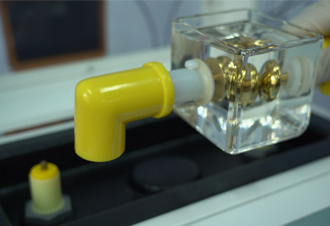 English
English


Designing an Inductor Testing Circuit for Efficient Inductance Measurement and Analysis
Inductor Tester Circuit Understanding and Applications
An inductor tester circuit is a crucial tool for electronics enthusiasts and professionals alike. It is designed to measure the inductance of various types of inductors, whether they are air-core, iron-core, or toroidal types. Inductors are passive electronic components that store energy in a magnetic field when electrical current flows through them, making them essential in filtering and energy storage applications.
The basic principle behind an inductor tester circuit revolves around measuring the time it takes for an inductor to charge and discharge through a known resistance
. This time constant can be translated into inductance using the well-known formula \(L = R \cdot T\), where \(L\) is the inductance, \(R\) is the resistance, and \(T\) is the time constant.To create a simple inductor tester circuit, one can utilize components such as a microcontroller, a resistor, a switch, and an oscilloscope or a digital voltmeter. The circuit can be set up by connecting the inductor in series with the resistor. When the switch is closed, the current begins to flow, and the time taken for the voltage across the inductor to reach a certain threshold can be measured. This time measurement is crucial for calculating the inductance value.
inductor tester circuit

In recent years, advancements in technology have led to the development of more sophisticated inductor testers that can provide not only inductance measurements but also parameters such as quality factor (Q) and equivalent series resistance (ESR). Higher-end devices may use frequency sweep techniques to analyze the behavior of the inductor over a range of frequencies, offering insights essential for RF applications.
These inductor testers find widespread applications in various fields, including audio electronics, RF circuit design, and power supply manufacturing. For hobbyists, building a DIY inductor tester can be a rewarding project. It enhances the understanding of inductor characteristics, which is fundamental for designing efficient circuits.
Moreover, an inductor tester can help in diagnosing faulty inductors in existing circuits. An inductor that has changed its inductance value or has a poor quality factor may lead to circuit failure. By testing inductors before implementing them in a design, engineers can ensure better reliability and performance.
In conclusion, an inductor tester circuit is an invaluable asset for anyone working with inductors in electronic circuits. Whether for educational purposes, circuit design, or repairing existing devices, understanding how to measure and interpret inductance is essential for achieving optimal electronic performance. With both simple DIY setups and advanced professional equipment available today, testing inductors has never been more accessible.
-
Differences between open cup flash point tester and closed cup flash point testerNewsOct.31,2024
-
The Reliable Load Tap ChangerNewsOct.23,2024
-
The Essential Guide to Hipot TestersNewsOct.23,2024
-
The Digital Insulation TesterNewsOct.23,2024
-
The Best Earth Loop Impedance Tester for SaleNewsOct.23,2024
-
Tan Delta Tester--The Essential Tool for Electrical Insulation TestingNewsOct.23,2024





